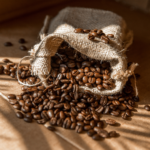Growing up in an Odia household, a visit to Shri Jagannath Temple in Puri was more than an annual ritual. After a heartfelt darshan, our next stop without fail used to be the Anand Bazar to have Mahaprasad. The sheer variety and the divine taste of the offerings made it a highlight of our trips. I often wondered why the feast consisted of exactly 56 dishes. Why not 72 or 48? This curiosity led me to delve deeper into the story behind Chhappan Bhog, a tradition steeped in devotion and cultural significance.
What is Chhappan Bhog (56 Bhog)?
Chhappan Bhog, which means “56 offerings,” is deeply embedded in Indian culture, particularly in the worship of Lord Krishna. This grand feast is not just a culinary event but a spiritual and cultural ritual, reflecting abundance and devotion. This ritual stems from Hindu mythology and involves preparing 56 different dishes, each symbolizing an aspect of devotion and gratitude. The offerings include a mix of cereals, fruits, dry fruits, vegetable preparations, sweets, beverages, savories, and chutneys.
The Chhappan bhog is not only a display of culinary richness but also a deep-seated tradition that highlights the cultural and spiritual values of the community.

What is the mythological story behind Chhappan Bhog?
The legend behind Chhappan Bhog is linked to Lord Krishna’s childhood. It is a rather interesting story- why Chhappan bhog literally items 56 items.
In order to protect his village from the wrath of the Rain God Indra, Krishna lifted Govardhan parvat (mountain) and placed it on the tip of his little finger. He sheltered everyone from his village under the parvat. He stood holding the mountain for 7 days until Lord Indra realized his mistake.
Krishna used to eat 8 food items daily. But during these 7 days, he didn’t consume anything. At the end of the seventh day once the rains subsided, the villagers offered their thanks to Krishna by preparing a mountain of food, i.e., everyone made 56 (8*7) dishes for Lord Krishna.
What goes into Chhappan Bhog?
Preparing a Chhappan Bhog is a journey through Indian culinary diversity. From the rich texture of kheer to the tangy flavor of pickles, each dish offers a unique sensory experience. Apart from the favorites including milk, butter, yogurt, and rice, the actual dishes in the 56 bhog vary from region to region across India.
Did you know the dairy and sweet offerings are placed near to the god as they are deemed to be his favorite?
Even today, every single day, 56 items are prepared in the kitchen of Jagannath Temple, Puri. It is believed that Goddess Laxmi supervises the meal and sees that it is prepared with the utmost devotion and care. It is cooked in earthen pots and only over a wooden fire. The Mahaprasad or Chhapan bhog is first offered to the trio (Lord Jagannath, Lord Balabadhra, and Goddess Subhadra). Then, it is offered to Goddess Bimala and is considered Mahaprasad or Abhadha.
Here are the items of Chhappan bhog.
Rice Dishes
- Sadha Anna
- Ghea Anna
- Kanika
- Khechudi
- Thali Khechudi
- Ada Pakhala
- Mitha Pakhala
- Odia Pakhala
- Dahi Pakhala
Dal & Curries
- Biri dali
- Chana Dali
- Muga Dali
- Mitha Dali
- Dalma
- Raita
- Besara
- Saaga
- Baigini
- Goti Baigana
- Khata
- Mahura
- Pita
- Potala Rasa
Sweet Dishes
- Khaja
- Gaja
- Ladu
- Jeera Ladu
- Magaja Ladu
- Marichi Ladu
- Mathapuli
- Jagannath Ballav
- Kakara pitha
- Khuruma
- Luni Khuruma
Pitha & Manda
- Suar Pitha
- Chadai Lada
- Chhena Jhilli
- Chandrakanti
- Manda
- Amalu
- Puri
- Luchi
- Dahi Bara
- Bara
- Arisapitha
- Tripuri
- Rosapaik
Milk-based Dishes
- Khiri
- Chhena papudi
- Khua
- Rasabali
- Tadia
- Chhena Khai
- Bapudi Khaja
- Khua Manda
- Sarapulli
How is Chhappan Bhog served to Lord Jagannath?
Even today, every single day, 56 items are prepared in the kitchen of Jagannath Temple, Puri. There are six sets of offerings are made throughout different meal hours.
- Gopala Vallabha Bhoga (8.30 AM)
- Sakala Dhupa (10.00 AM)
- Bhoga Mandapa Bhoga (11.00 AM)
- Madhyanha Dhupa (12.30 PM to 1.00 PM)
- Sandhya Dhupa (7.00 PM to 8.00 PM)
- Bada Srungara Bhoga (11.00 PM)
Chhappan Bhog is more than a collection of dishes; it embodies a larger philosophy. Our five fingers symbolize the five rasas: sweet, salty, sour, spicy, and savory. When we cook with our hands, these rasas are transferred to the food, infusing it with emotions and memories.
Chhappan Bhog can also be considered a manifestation of these rasas, a way of conveying love and devotion through food. Offering this feast to the gods elevates it to a sacred act, with Krishna’s acceptance symbolizing a profound spiritual connection.
To conclude, Chhappan Bhog is a celebration of cultural richness, tradition, and devotion. It is a testament to Odia and, moreover a testament to India’s culinary heritage and spiritual depth.


ivermectin 6mg tablet – buy candesartan cheap buy carbamazepine 200mg for sale
purchase absorica for sale – dexamethasone 0,5 mg pills linezolid over the counter
buy amoxil for sale – buy amoxil medication ipratropium price
brand zithromax 250mg – buy nebivolol online cheap cost bystolic
order omnacortil 5mg pill – buy azithromycin 250mg online purchase progesterone without prescription